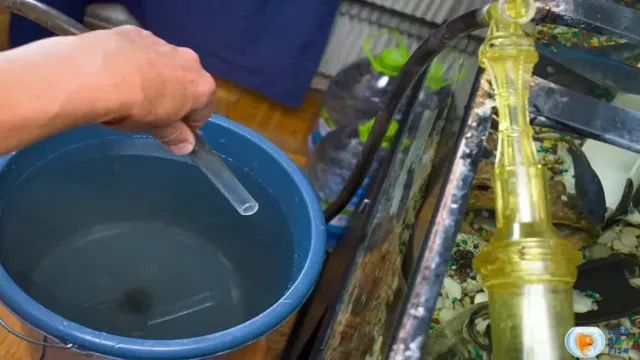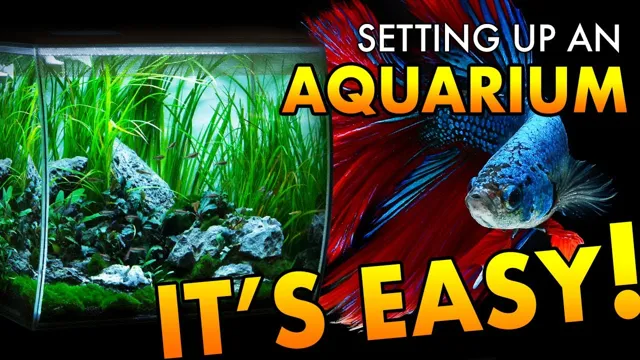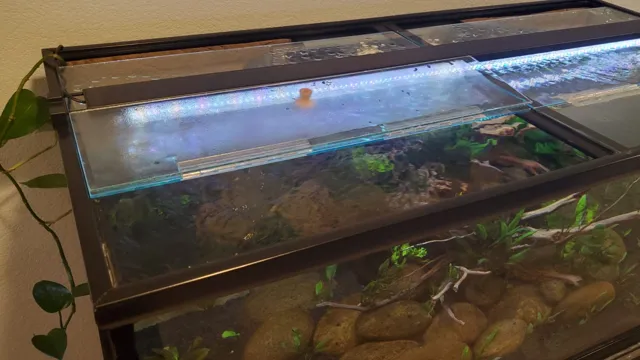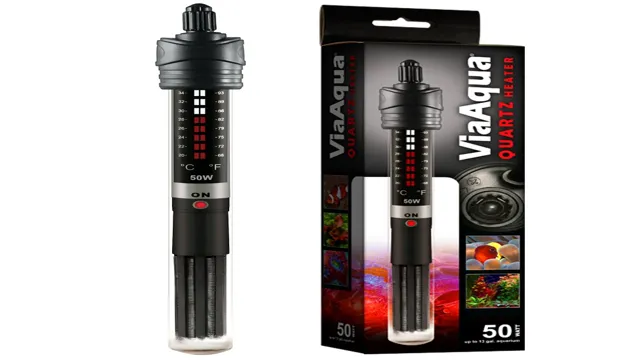So, you’ve finally decided to add some greenery to your aquarium, and you’re excited about it! The lush plants will enhance the beauty of your underwater universe and provide a home for your aquatic pets. However, just like any other aquatic item, these plants need regular cleaning to maintain their health and aesthetic appeal. Cleaning plants in your aquarium might seem like a daunting task, but with a few simple steps, you can keep them healthy and thriving.
In this article, we’ll provide you with a guide on how to clean plants for your aquarium, so let’s dive in.
Introduction
If you are planning to add plants to your aquarium, it’s crucial to clean them properly before doing so. Unclean plants can introduce harmful bacteria and parasites into your tank, putting your fish at risk. To clean your plants, first, rinse them in a bucket of clean water to remove any debris or dirt.
Next, soak the plants in a solution made of one part bleach and twenty parts water for 5-7 minutes, making sure to submerge the entire plant. Rinse them thoroughly in clean water and wait for about 24-48 hours before adding them to your aquarium. This waiting period allows any remaining traces of bleach to dissipate and ensures that it’s safe for your aquatic animals.
Remember, cleaning your plants before adding them to your aquarium is a necessary step in maintaining a healthy environment for your fish!
Why clean plants are important for your aquarium
Keeping your aquarium clean is crucial to maintaining a healthy and thriving aquatic environment for your fish and plants. Dirty plants can become a breeding ground for harmful bacteria, algae, and other harmful microorganisms that can quickly spread throughout your tank, causing illness and even death. In addition, a buildup of organic matter on your plants can contribute to poor water quality, leading to cloudy water and unpleasant odors.
By regularly cleaning your plants, you can prevent these issues and ensure that your aquarium remains a beautiful and healthy oasis for your aquatic pets. So, don’t overlook the importance of plant maintenance and keep your aquarium looking its best with clean and healthy plants.

Types of plants suitable for your aquarium
Aquarium plants add beauty and life to your aquarium, and they also provide a holistic environment to your aquatic pets. Knowing what types of plants are suitable for your aquarium is important for maintaining the overall health of your aquarium. There are various plant species to choose from, and each has its own unique characteristics.
Whether you have a freshwater or saltwater aquarium, it’s important to choose plants that can thrive in your water environment. Some popular types of aquarium plants include the Anubias plant, Java Fern, and Amazon Swords. These plants are easy to maintain and provide great benefits to your aquarium ecosystem.
So, before choosing your aquarium plants, do your research and select the ones that fit your environmental and aesthetic preferences.
Factors that determine the cleaning process
cleaning process Introduction: Cleaning is an essential part of maintaining hygiene and cleanliness in our surroundings. Maintaining a clean environment is crucial for our health, and it is essential to follow the correct cleaning procedures to achieve optimal sanitation. However, diverse factors determine the cleaning process we should employ. (See Also: How to Get from Osaka Station to Osaka Aquarium: A Complete Guide)
The type and condition of the surface, the level and type of contamination, and the cleaning equipment available are some of the factors that play a significant role in determining the cleaning process. Adhering to the correct cleaning process is crucial to ensure cleanliness and avoid potential health hazards. Therefore, in this article, we will explore the factors that determine the cleaning process and why it is essential to adhere to them.
Cleaning Process
When adding plants to your aquarium, it’s important to give them a good cleaning first. Not only will this prevent any potential introduction of harmful organisms or pests, but it will also ensure that your plants thrive in their new environment. To start, give your plants a gentle rinse under running water to remove any loose debris or dirt.
From there, you can soak them in a solution of water and aquarium-safe disinfectant such as bleach, hydrogen peroxide, or potassium permanganate. Be sure to follow the instructions on the disinfectant and don’t leave the plants in the solution for too long, as this can harm them. Once the plants have soaked for the recommended time, rinse them thoroughly with clean water before adding them to your aquarium.
By taking the time to clean your plants before adding them to your tank, you’ll be setting your aquarium up for success and creating a healthier environment for your aquatic friends to thrive in.
Remove any dead or decaying leaves
Keeping your plants healthy and thriving requires regular maintenance and care. One crucial step in this process is to remove any dead or decaying leaves from your plants. Not only do these leaves look unsightly, but they can also attract pests and disease, which can spread to healthy leaves and eventually kill the plant.
When removing dead or decaying leaves, it’s important to use sharp and clean gardening shears to make a clean cut close to the stem. Be sure to dispose of the leaves properly, as placing them in your compost pile could spread disease to other plants. By regularly cleaning your plants of dead or decaying leaves, you can help promote healthy growth and prevent potential issues.
So, take a few moments to give your plants some extra TLC today and keep them looking their best all year round.
Washing plants with tap water
When it comes to washing plants with tap water, there are a few things to keep in mind to ensure that they are getting the proper cleaning they need without causing harm. First and foremost, it’s important to use room temperature water instead of cold or hot water as extreme temperatures can shock the plants and damage them. Additionally, it’s crucial to avoid using hard water as it contains high levels of minerals that can build up in the soil and damage the plant’s roots.
Instead, opt for filtered or distilled water to prevent any harmful buildup. Finally, be sure to thoroughly water the soil and avoid getting the foliage wet as excess moisture can lead to mold and fungus growth. Overall, with a few simple precautions, washing your plants with tap water can help keep them healthy and thriving.
Using salt solution for disinfecting plants
When it comes to cleaning plants, using a salt solution can be an effective way to disinfect them. The process is straightforward and easy to follow. First, mix a tablespoon of salt into a gallon of lukewarm water until it’s completely dissolved.
Then, pour the solution into a spray bottle and mist the leaves and stems of your plants. Be sure to cover both the tops and undersides of the leaves, as well as any crevices where bacteria or fungus could be hiding. Don’t be afraid to use a little bit of elbow grease, too! Gently wipe down the leaves with a soft cloth to ensure all surfaces have been disinfected. (See Also: How to Add a Decoration to an Existing Aquarium – Simple DIY Ideas)
Using a salt solution is a natural and non-toxic way to keep your plants healthy and free from harmful organisms. Plus, it’s a great alternative to harsh chemical cleaners that can damage your plants and harm the environment. So next time you’re cleaning your plants, give the salt solution method a try!
Quarantine plants to prevent any potential issues
Quarantine plants to prevent any potential issues during your indoor gardening adventure! Before bringing in a new plant, it’s essential to go through a cleaning process to prevent the spread of pests and diseases. Start by inspecting the plant thoroughly and checking for any signs of bugs or fungi. If you notice any issues, isolate the plant and treat it before bringing it inside.
Next, wash the plant with soap and water, ensuring that you get all the nooks and crannies. Afterward, rinse the plant thoroughly and consider using insecticidal soap or neem oil as an extra precaution. Remember to quarantine the new plants for at least a week before introducing them to your other plants.
This step is crucial because it allows you to monitor the new plant for any potential issues before introducing it to your collection. By taking these extra steps, you can ensure that your indoor garden remains healthy and thriving while avoiding potential problems.
Conclusion
So there you have it, folks: the ultimate guide on how to clean plants before adding them to your aquarium! Whether you’re a seasoned aquarium expert or a newbie just starting out, following these simple steps will ensure that your tank stays healthy and beautiful. Plus, it’ll give you an excuse to break out the toothbrush and get scrubbing. After all, who knew plant cleaning could be so satisfying? Just don’t be surprised if you find yourself humming a little tune while you’re at it.
Happy planting!”
Importance of cleaning plants before adding them to your aquarium
Keeping your aquarium plants clean is a must for any aquarium owner. Dirty plants can cause a variety of different issues, including algae growth, poor water quality, and even the death of your fish. So, before adding any new plants to your aquarium, it’s important to clean them thoroughly.
Start by removing any dead or decaying leaves or stems from the plant. Then, rinse the plant under running water to remove any debris or dirt. You can also soak the plant in a solution of water and aquarium-safe cleaning solution for a few minutes to kill off any unwanted bacteria or pathogens.
Once the plant is clean, make sure to gently shake off any excess water before adding it to your aquarium. Regularly cleaning your plants can also help prevent the spread of diseases among your fish. This is especially important if you have multiple tanks or if you share equipment between tanks.
By cleaning your plants before adding them to your aquarium, you can help ensure the health and wellbeing of your fish, as well as maintain optimal water quality. So, don’t forget to include a regular cleaning regimen for your aquarium plants in your overall maintenance routine. Your fish will thank you for it! (See Also: How to Combat Cyanobacteria in Freshwater Aquarium: Tips and Tricks!)
FAQs
Why is it important to clean plants before adding them to an aquarium?
It is important to clean plants before adding them to an aquarium because they may contain harmful bacteria, parasites, or chemicals that can harm aquatic life.
What is the best way to clean plants before adding them to an aquarium?
The best way to clean plants before adding them to an aquarium is to soak them in a solution of water and bleach or potassium permanganate, followed by a thorough rinse in clean water.
Can I use vinegar to clean plants before adding them to an aquarium?
Yes, you can use a solution of vinegar and water to clean plants before adding them to an aquarium. However, vinegar may not be as effective as bleach or potassium permanganate in killing harmful organisms.
How long should I soak plants in a cleaning solution before adding them to an aquarium?
The length of time you should soak plants in a cleaning solution before adding them to an aquarium depends on the type of solution you are using. Generally, a 10-15 minute soak is sufficient.
Should I quarantine plants before adding them to an aquarium?
Yes, quarantining plants before adding them to an aquarium is a good way to ensure that they do not introduce any diseases or pests to your aquarium.
Can I use plants from my backyard in my aquarium?
It is generally not recommended to use plants from your backyard in your aquarium, as they may contain harmful organisms or pesticides. It is better to purchase plants from a reputable pet store or aquarium supplier.
How often should I clean the plants in my aquarium?
You should clean the plants in your aquarium as needed, based on factors such as algae growth, debris accumulation, and water quality. It is a good idea to visually inspect your plants on a regular basis to determine if they need cleaning.







